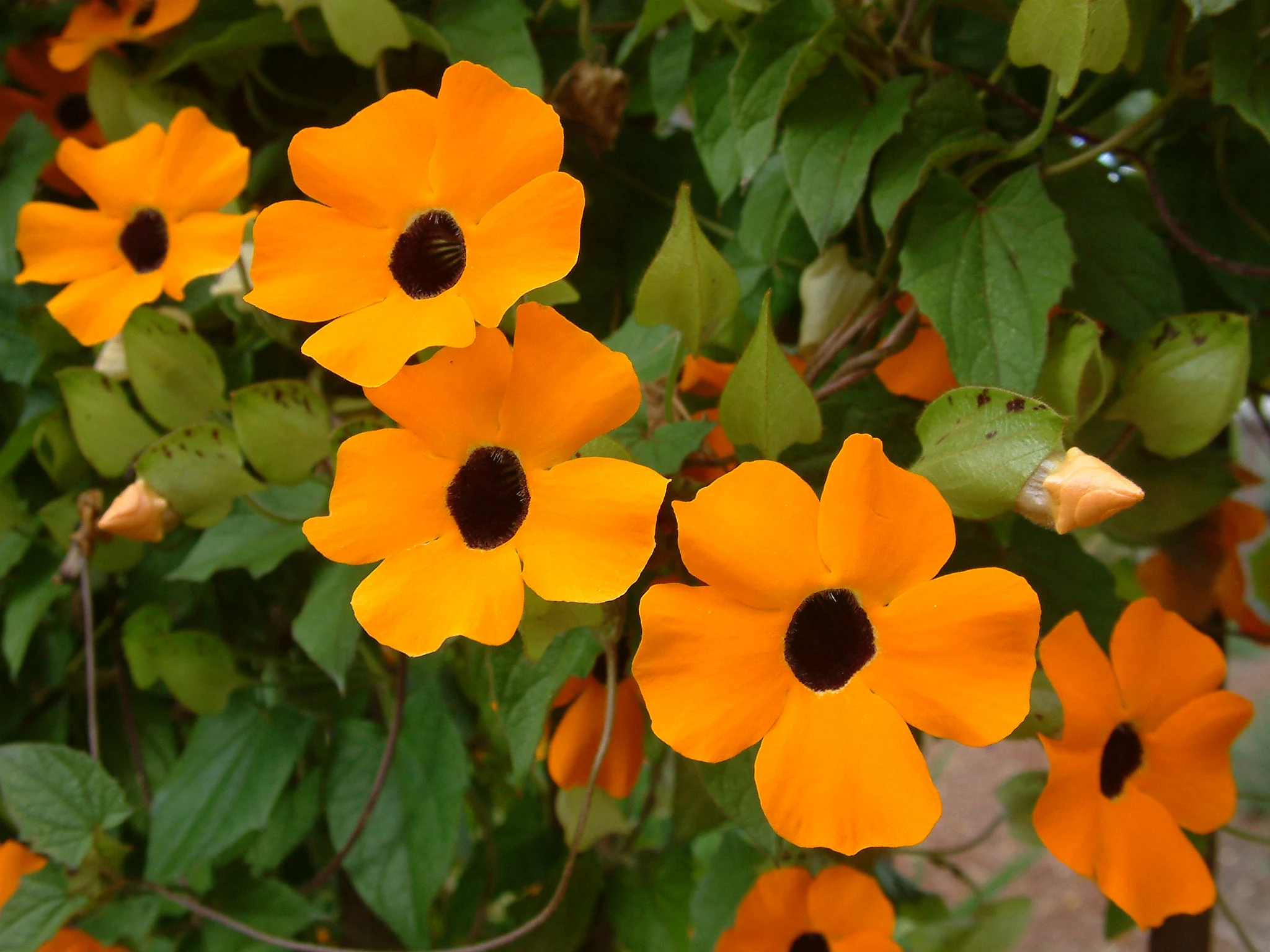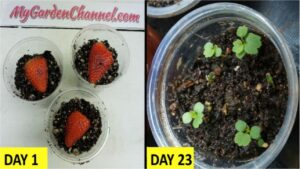The Orange Black-Eyed Susan (Rudbeckia hirta) is a vibrant, sun-loving perennial known for its striking orange petals and dark central cones. This plant is a favorite in gardens and landscapes for its cheerful blooms and easy care requirements. Here’s a detailed care guide for keeping your Orange Black-Eyed Susan healthy and thriving:
1. Light Requirements
- Full Sun: Orange Black-Eyed Susan thrives in full sun, meaning it needs at least 6 hours of direct sunlight per day to grow vigorously and produce abundant flowers.
- Partial Shade: It can tolerate some light shade, especially in hot climates, but it may not bloom as profusely in lower light conditions.
2. Soil and Watering Needs
- Soil Type: The plant prefers well-draining soil with a slightly acidic to neutral pH. It tolerates a range of soil types, including clay, loam, and sandy soil, as long as the drainage is good.
- Watering Frequency: Water the plant regularly, especially during dry periods. Keep the soil moderately moist but not soggy. Once established, Black-Eyed Susans are fairly drought-tolerant, but they will benefit from consistent watering, particularly in the first growing season.
- Watering Tip: To avoid waterlogged roots, ensure that the soil drains well and avoid watering the plant overhead to prevent fungal diseases.
3. Temperature and Humidity
- Ideal Temperature: Orange Black-Eyed Susan thrives in moderate to warm temperatures, between 70°F and 85°F (21°C to 29°C). It’s quite tolerant of heat but should be protected from extreme cold.
- Cold Tolerance: It can survive light frosts but will die back in colder climates during winter. In colder zones, it may be treated as an annual or brought indoors during the winter.
- Humidity: The plant does well in normal garden humidity levels. Avoid overly moist environments that can promote fungal growth.
4. Fertilizing
- Feeding Needs: While not heavy feeders, Black-Eyed Susans can benefit from light fertilization during the growing season. Use a balanced, slow-release fertilizer or a general-purpose liquid fertilizer once a month in spring and summer.
- Excess Fertilizer: Avoid over-fertilizing, as too much nitrogen can lead to excessive foliage growth with fewer blooms.
5. Pruning and Deadheading
- Deadheading: Remove spent blooms regularly to encourage new flowers and keep the plant looking tidy. Cutting off the dead flowers can also extend the blooming period.
- Cutting Back in Fall: At the end of the season, you can cut the plant back to ground level to prepare it for the winter. This helps prevent disease and encourages fresh growth in the spring.
- Cutting Stems for Bouquets: Black-Eyed Susans are excellent for cut flowers. Harvest the blooms early in the morning when the flowers are fully open but not yet wilting.
6. Companion Plants
- Good Companions: Black-Eyed Susans pair well with other sun-loving perennials such as coneflowers, lavender, or coreopsis. Their bright orange blooms can also complement the purple and pink hues of other garden plants.
- Avoid Overcrowding: While they do well in a variety of settings, make sure not to overcrowd the plant with other species to allow ample airflow and prevent fungal diseases.
7. Pests and Diseases
- Common Pests: Orange Black-Eyed Susan is relatively pest-resistant, but it can occasionally be affected by aphids, Japanese beetles, or leafhoppers. Monitor the plant for these pests, especially during the growing season, and treat with insecticidal soap or neem oil if necessary.
- Fungal Diseases: The plant can be susceptible to fungal diseases like powdery mildew or rust, especially if it is too crowded or watered improperly. To prevent these, avoid overhead watering, ensure good air circulation around the plant, and remove any infected foliage promptly.
- Root Rot: As with many plants, overwatering or poor drainage can lead to root rot. Ensure your plant is in well-draining soil, and avoid letting it sit in standing water.
8. Propagation
- From Seed: You can easily propagate Black-Eyed Susans from seeds. Collect seeds from mature flowers in the fall and store them in a dry, cool place until spring. Plant the seeds directly in the ground after the last frost, or start them indoors 6-8 weeks before the last frost.
- Division: You can also divide Black-Eyed Susans every 2-3 years to keep them vigorous. Dig up the plant, carefully separate the clumps, and replant them in well-prepared soil.
9. Winter Care
- Winterizing: In colder climates, Black-Eyed Susans will die back in winter. You can leave the dried foliage on the plant until spring, as it provides some winter interest and protection for the roots. In very cold regions, you can mulch around the base to protect the roots.
- Indoor Care (if brought inside): If growing the plant in a container, you can bring it indoors during the winter. Keep it in a cool, bright location and reduce watering during its dormancy period.
10. Toxicity
- Non-Toxic: Orange Black-Eyed Susan is non-toxic to humans, pets, and wildlife, making it a safe choice for gardens with children and animals.
Conclusion
Orange Black-Eyed Susans are hardy, colorful plants that bring a burst of sunshine to any garden. With minimal care, they will bloom prolifically in full sun and provide months of cheerful color. These perennials are easy to grow, making them perfect for beginners and experienced gardeners alike.
Proudly powered by WordPress






